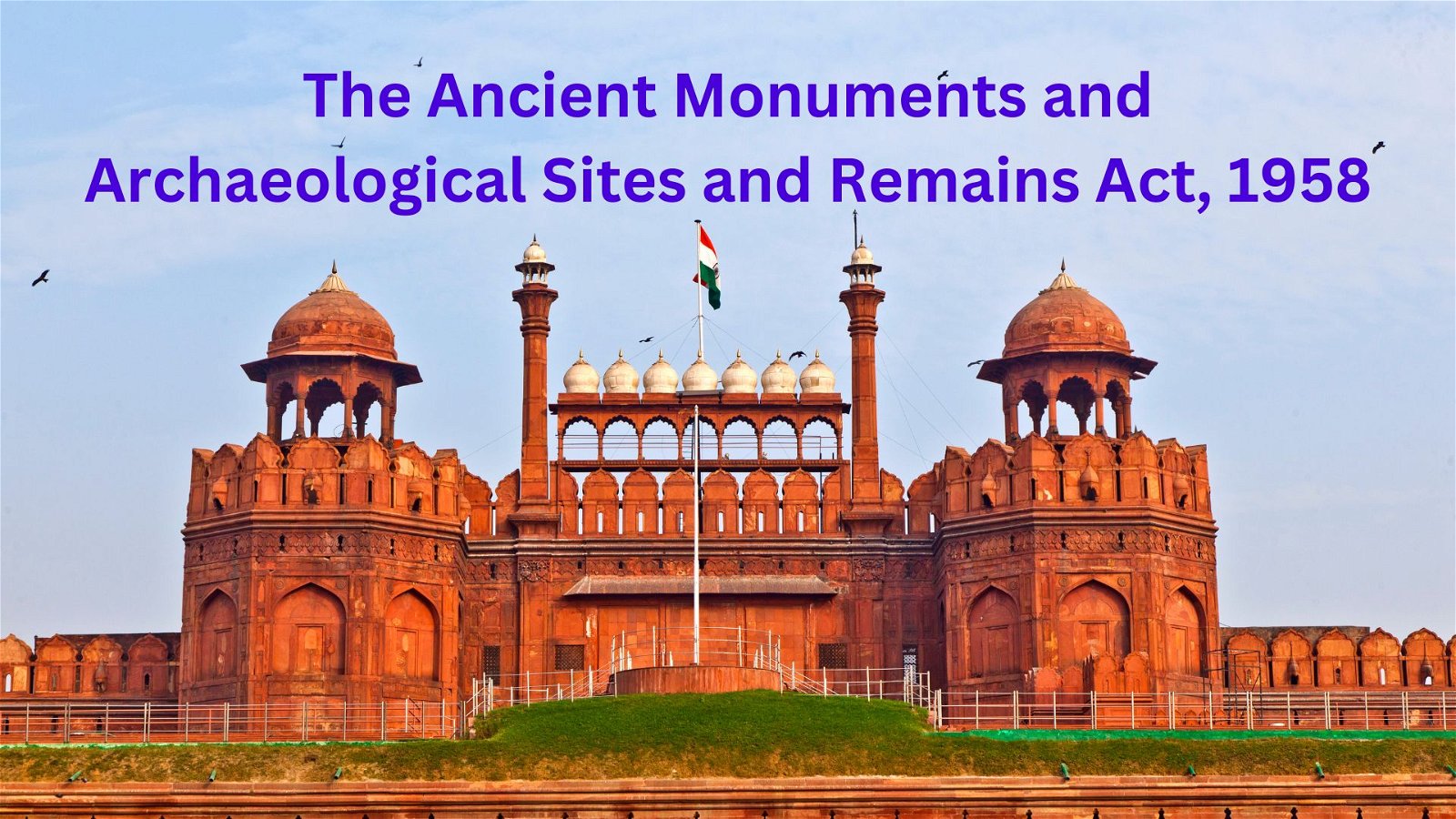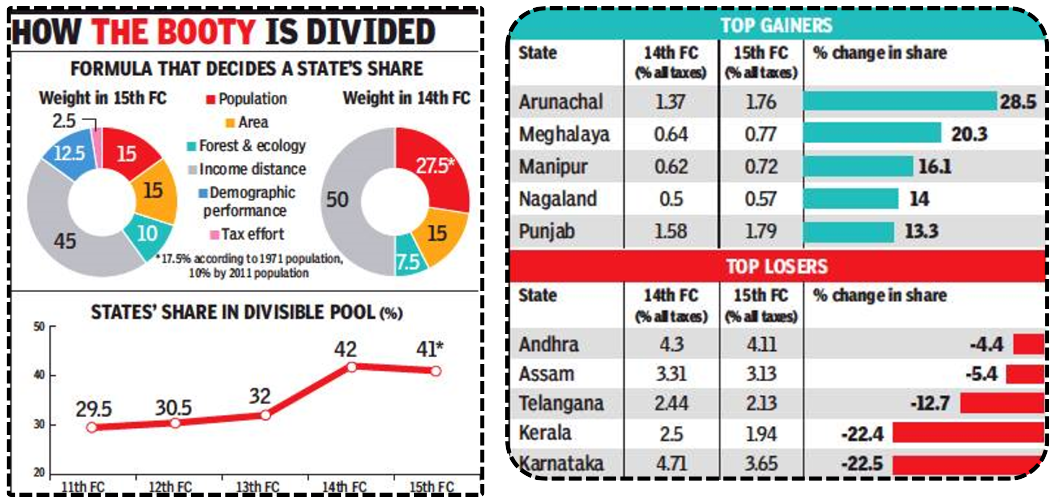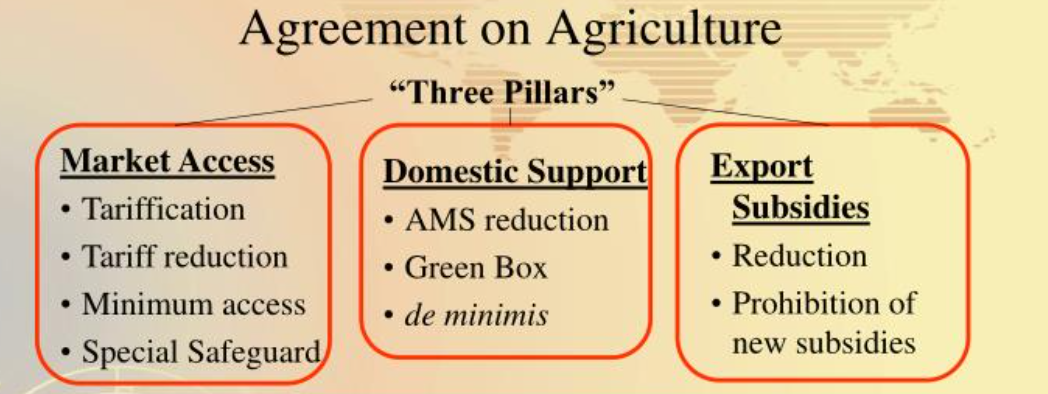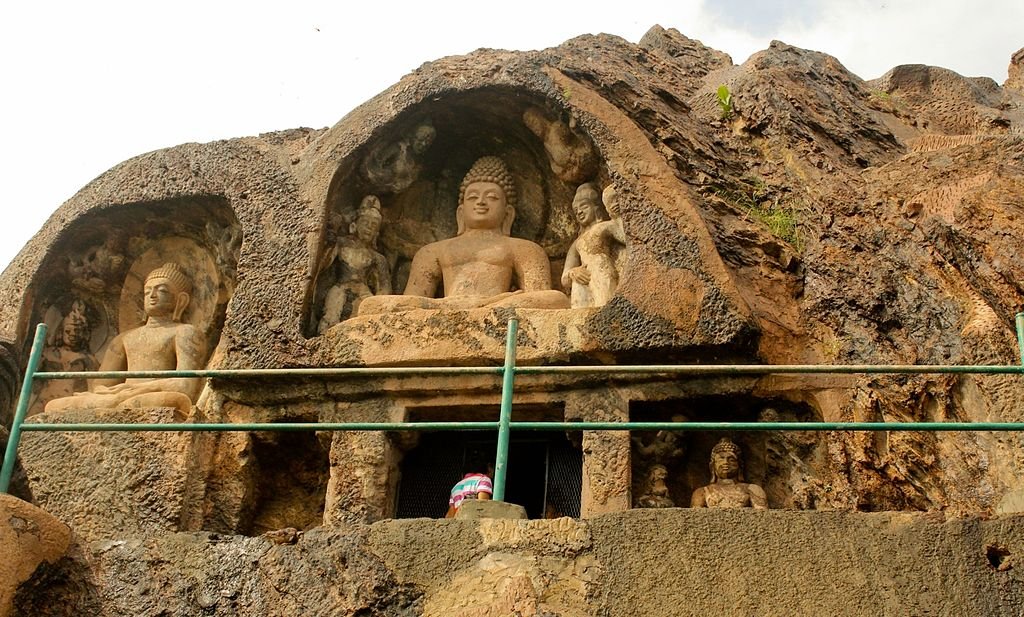
Current Affairs September 21, 2023: Reservation, Abraham Accords, Human Rights: United Nations Paris Principles, Kisan Rin Portal, Kisan Credit Card, WINDS Portal, PTP-NER, PDUNWFS, Floodplains, Naked Mole Rats, SIMBEX 23, Truenat Test
Subscribers of "Current Affairs" course can Download Daily Current Affairs in PDF/DOC
Subscribe to Never Miss an Important Update! Assured Discounts on New Products!
Must Join PMF IAS Telegram Channel & PMF IAS History Telegram Channel
{GS2 – IC – Polity – Parliament – 2023/09/21} Bill and Act
- Context (TH): LS passed the women’s reservation bill.
- Now, it has to be passed in RS and ratified by at least one-half of the states.
- The law-making process begins with introducing a bill in either House of Parliament.
- A bill can be introduced either by a minister or a member other than a minister.
- When a minister introduces a bill, it is called a Government Bill.
- When a member other than a minister introduces a bill, it is called a Private Member’s Bill.
|
How does a Bill become an Act?
- A bill becomes law when it receives the approval of both the Houses of Parliament and the assent of the President of India.
- A Bill undergoes three readings in each House before it is submitted to the President.
First Reading
- It refers to:
- Motion for leave to introduce a bill in the House; or
- Laying the bill on the table of the House (if the bill originated in and passed by the other House)
Second Reading
- It consists of two stages.
- During the “First Stage,” Parliament discusses the bill’s principles and provisions through different motions, like:
- Bill be taken into consideration; or
- Bill be referred to a Select Committee of the House; or
- Bill be referred to a Joint Committee of the Houses with the concurrence of the other House; or
- Bill be circulated to elicit opinion thereon.
- In the “Second Stage,” the bill is examined clause by clause.
|
Third reading
- It involves discussing the motion to pass the Bill.
Assent to Bills
- Once both Houses of Parliament pass a bill, it’s sent to the President for approval.
- Once the President grants assent, the bill becomes the law.
- The President may either:
- Give assent to the Bill, or
- Withhold his assent, or
- Return the Bill (if it is not a Money bill)
- The President may either give or withhold his assent to a Money bill.
- A Money bill cannot be returned to the House by the President for reconsideration.
- The President is bound to give his assent to the Constitution Amendment Bill passed by Parliament and ratified by the requisite number of State Legislatures (if necessary).
{GS2 – IR – Isreal – 2023/09/21} Abraham Accords
- Context (TH): This week marks the third anniversary of the signing of the Abraham Accords.
- Abraham accord (Israel-Arab normalisation) is an agreement for normalising relations between Israel and four Arab countries:
- Bahrain
- United Arab Emirates
- Sudan
- Morocco
- In 2020, Israel, UAE and Bahrain signed the agreement to normalise ties. The USA brokered it.
- Subsequently, Morocco and Sudan were added.
Importance
- Trade between Israel and other West Asian countries increased 74% between 2021 and 2022.
- Tourism has skyrocketed.
- Direct flights between the UAE and Israel have started.
{GS2 – IR – UN – 2023/09/21} Human Rights: United Nations Paris Principles
- Context (PIB I IE): The President of India inaugurated the Annual General Meeting and Biennial Conference of the Asia Pacific Forum on Human Rights in New Delhi.
- The Asia Pacific Forum (APF) is one of four regional networks of National Human Rights Institutions (NHRIs) within the International Co-ordinating Committee (ICC) of NHRIs.
- The APF formerly accredited NHRIs for compliance with the United Nations Paris Principles but now acknowledges the accreditation decisions of an ICC sub-committee.
United Nations Paris Principles
- The Paris Principles are a set of human rights standards and guidelines.
- They were developed during the first International Workshop on National Institutions for the Promotion and Protection of Human Rights in Paris in 1991.
- It was adopted by the United Nations Human Rights Commission (UNHRC) in 1992 (Resolution 1992/54) and later by the UN General Assembly in 1993 (Resolution 48/134).
- The principles address establishing and operating National Human Rights Institutions (NHRIs).
- They were developed through discussions on the role, composition, status, & functions of NHRIs.
- The Paris Principles build upon earlier standards established in the 1978 Geneva Seminar on National and Local Institutions for the Promotion and Protection of Human Rights.
Paris Principles Requirements for NHRIs
- Compliance with the Paris Principles is the central requirement of the accreditation process that regulates NHRI access to the United Nations Human Rights Council and other bodies.
- The accreditation process is a peer review system operated by the Sub-Committee on Accreditation of the Global Alliance of National Human Rights Institutions (GANHRI).
- The following are the Paris Principles Requirements for NHRIs:
- NHRIs shall monitor any situation of violation of human rights that it decides to take up.
- NHRIs shall be able to advise the government, the parliament, and other competent bodies on legislation and general compliance with international human rights instruments.
- NHRIs shall independently engage with regional and international organisations.
- NHRIs shall have a mandate to educate and inform in human rights.
- Some NHRIs are given a quasi-judicial competence.
{GS2 – MoAFW – Initiatives – 2023/09/21} Initiatives to Revolutionise Agriculture
- Context (PIB | BS | PIB): The Ministry of Agriculture & Farmers Welfare (MoA&FW) launched several initiatives focused on agri-credit (KCC & MISS) and crop insurance (PMFBY & RWBCIS).
- These initiatives aim to revolutionise agriculture, enhance financial inclusion, optimize data utilization, and improve the lives of farmers across the nation.
Kisan Rin Portal (KRP)
- Kisan Rin Portal aims to give farmers subsidised loans under the Kisan Credit Card (KCC) scheme.
- It will offer a comprehensive view of farmer data, scheme utilisation progress, loan disbursement specifics, and interest subvention claims.
KCC Ghar Ghar Abhiyaan
- It is a door-to-door campaign that will extend the benefits of KCC to non-KCC holders of beneficiaries of the central scheme PM-KISAN.
Weather Information Network Data Systems (WINDS)
- WINDS Portal is a centralised platform that hosts, manages, and processes hyper-local weather data collected by Automatic Weather Stations & Rain Gauges at Taluk/Block and Gram Panchayat levels.
YES-TECH Manual
- YES-TECH Manual is a technology-driven yield estimation system.
- It offers methodologies and best practices for accurate yield assessments at the Gram Panchayat level.
AIDE Mobile App
- AIDE app aims to bring the crop insurance enrolment process directly to farmers’ doorstep.
- This will make crop insurance more accessible and convenient for farmers.
Kisan Credit Card (KCC)
Objectives of KCC
Implementing Agencies of KCC
Eligibility of Farmers for KCC
Important Salient Features of KCC
|
||||||||||
Modified Interest Subvention Scheme (MISS)
MISS for Protecting Small and Marginal Farmers (SMFs)
MISS for Natural Calamities
Implementing Agencies of MISS
Financial Institutions Who Get Subvention Under MISS
|
||||||||||
PMFBY and RWBCISPradhan Mantri Fasal Bima Yojana (PMFBY)
Objectives of PMFBY
Coverage of Risks and Exclusions under the PMFBY Scheme
Restructured Weather Based Crop Insurance Scheme (RWBCIS)
Crops Covered by PMFBY and RWBCIS
Rate of Premium Paid by the Farmer to Insurance Company under PMFBY & RWBCIS
Farmers Covered by PMFBY and RWBCIS
|
{GS2 – MoAFW – Initiatives – 2023/09/21} WINDS Portal
- Context (BS): The Weather Information Network Data Systems (WINDS) portal was launched by the Ministry of Agriculture and Farmers Welfare (MoAFW).
- It leverages advanced weather data analytics to provide stakeholders with actionable insights for making informed decisions on agriculture.
- The portal also shares information about the ministry’s parametric crop insurance scheme, along with non-scheme parametric insurance industry programs for crop risk mitigation.
- The WINDS initiative emphasizes setting up a robust network of weather stations.
- The target is to establish a wide network of weather stations at the block and gram panchayat level.
{GS2 – MoTA – Schemes – 2023/09/21} PTP-NER
- Context (PIB): The Tribal Cooperative Marketing Development Federation of India Ltd. (TRIFED) has launched the Promotion of Tribal Products for North East Region (PTP-NER 2.0) scheme.
PTP-NER Scheme
- It is a Central Sector Scheme launched in April 2023 under the Ministry of Tribal Affairs (MoTA).
- It aims to help the tribal artisans through increased efficiency in the procurement, logistics and marketing of tribal products.
Objectives
- To set up collection and aggregation centres
- To design and implement branding and marketing strategies
- To improve logistics infrastructure
- To improve and diversify income-generating opportunities
Features
- It has been introduced to benefit STs of the NER.
- It organises 68 Tribal Artisan Melas (TAMs) in different districts of the NER to enlist tribal artisans.
- It helps tribal artisans increase their income by providing support for:
- Skills
- Entrepreneurship
- Product sourcing
- Marketing
- Transportation
Achievements of PTP-NER 1.0
- Reached 2,500 tribal artisans from 44 tribes.
- Empanelled 1,056 artisans.
- Identified 1,465 for training.
- Procured over 3,100 tribal products.
Tribal Cooperative Marketing Development Federation of India Ltd. (TRIFED)
|
{GS2 – MoYAS – Initiatives – 2023/09/21} PDUNWFS
- Context (PIB): Pandit Deendayal Upadhyay National Welfare Fund for Sportspersons (PDUNWFS) was established in March 1982 to support distinguished sportspersons from the past who are now living in impoverished conditions and have brought honour to India in sports.
- The PDUNWFS is under the Ministry of Youth Affairs & Sports (MoYAS).
- The scheme was revised in May 2016 to provide a one-time ex-gratia assistance to these exceptional sportspersons of the past.
- It can be administered to active sportspersons individually or collectively as a group.
Eligibility Criteria
- The applicant must be a serving or retired sportsperson (including sports doctors, sports psychologists, sports mentors, physiotherapists, coaches, support personnel, umpires, and match officials).
- The applicant must have represented India at a national or international sports competition.
- The applicant’s or family’s annual income (from all sources) must be less than Rs. 4 LPA.
- The applicant must qualify as one of the following:
- Injured during their training period for competitions and also during the competitions.
- Disabled as an after-effect of their strenuous training or otherwise.
- Living in impoverished circumstances.
- Dependent on a deceased sportsperson.
Benefits of PDUNWFS
- Financial Assistance: A one-time ex-gratia financial assistance up to a maximum of Rs. 5 lakhs.
- Monthly Pension: A monthly pension of Rs. 5000/-.
- Assistance for Sports Injuries: A one-time ex-gratia up to a maximum of Rs. 10 lakhs.
- Assistance to Families of Deceased Sportspersons: A one-time ex-gratia financial assistance, not exceeding Rs. 5 lakhs.
- Medical Treatment Assistance: Financial assistance not exceeding Rs. 10 lakhs.
- Assistance to Coaches and Support Personnel: Financial assistance, not exceeding Rs. 2 lakhs, may be provided to coaches and support personnel.
{GS2 – Vulnerable Sections – SCs and STs – 2023/09/21} Reservation
- Context (TH): A Constitution Bench of SC decided to examine whether the extensions granted to reserve seats for SCs and STs in the LS and the Legislative Assemblies were constitutionally valid.
- Originally, the IC provided the reservation for SCs and STs in the LS and the Legislative Assemblies only for ten years.
- Article 334 of the IC deals with the time period to cease reserving seats for SCs, STs and Anglo-Indians. It was amended multiple times and stretched the deadline to stop the reservation.
- 104th Constitutional Amendment Act of 2019:
- Terminated the reservation for the Anglo-Indian community.
- Fixed 2030 as the deadline to end the reservation for SC/STs in the LS & Legislative Assemblies.
- By 2030, the SCs and STs would have enjoyed reservation for 80 years since adopting the IC.
- Reservation for SCs and STs in the LS and the Legislative Assemblies differs from reservation in educational institutions and jobs.
Related constitutional provisions
- Articles 330 and 332 of IC deal with reserving seats for SCs and STs in the LS and legislative assemblies of the states, respectively.
- Articles 331 and 333 of IC deal with the representation of the Anglo-Indian Community in the LS and legislative assemblies of the states, respectively.
- Article 334 is the sunset clause for reserving seats for SCs, STs, and Anglo-Indians. Initially, it provided the reservation only for ten years, but the subsequent amendments extended it.
{GS3 – DM – Floods – 2023/09/21} Protecting Floodplains: Need of the Hour
- Context (TH): Illegal construction work in floodplains reduces the capacity of rivers to contain a high level of water within their banks.
- As per the Geological Survey of India, over 40 million hectares, which is nearly 12% of India’s total land area, are prone to floods.
|
Concerns with Mismanagement of Floodplains
Reduces the Capacity of Rivers
- Illegal construction work in floodplains reduces the capacity of rivers to contain a high level of water.
- This is especially the case during heavy rainfall when water flows down from upper catchment areas.
- A 2018 report by CAG has attributed encroachments in the floodplains of the rivers as the prime reason for the 2015 Chennai floods. The auditor called the deluge a ‘human-made disaster’.
Blow to the Economy
- Indian cities are projected to contribute 75% of the GDP by 2030.
- Cities expand fast and mainly in a haphazard manner, with little effort made to maintain natural topography. This makes cities more vulnerable to disasters, ultimately impacting the economy.
Loss of Lives and Livelihoods and Damage to Infrastructure
- The devastating floods of Uttarakhand in 2013, Kashmir Valley in 2014, Chennai in 2015, and Gujarat in 2017 have caused massive loss of lives and livelihoods and damage to infrastructure.
- Mismanagement of floodplains is a significant reason which made these floods so disastrous.
Reasons Behind the Mismanagement of Floodplains
Infrastructure Development Without Considering Natural Topography
- Huge infrastructure development is going on in the along the Indian rivers. However, many development projects are paying little attention to natural topography.
- They are constructing by encroaching the floodplains, blocking or diverting the rivers’ natural flow, not considering soil structure, etc.
- These factors are leading to major floods in India. E.g., Devastating floods and landslides in Himachal Pradesh in 2023.
Flouting of Rules
- While doing development activities along the flood plains, the rules for protecting them are easily overlooked or bypassed.
- For example, Uttarakhand has been neglecting eco-sensitive floodplains by allowing the construction of guest houses and hotels on the riverfront to promote tourism and boost its economy.
- After the massive floods in 2013, the NGT barred the construction of buildings 200 m along the banks of the Ganga. But attempts were made to bypass this.
- It is also unclear whether environmental impact assessments are correctly done in the State.
- The Uttaranchal River Valley (Development and Management) Act, 2005, regulates mining and construction in the river valley. However, reports indicate rampant mining and construction activity.
Resorting to Only Technical Measures
- India’s flood protection strategy includes technical measures such as laying dikes, temporary flood defence walls, and polders. All these measures are temporary against the incredible might of rivers.
- For sustainable flood management, water retention and floodplain restoration are necessary.
Way Forward
- Floodplain restoration and water retention of water bodies are pillars against flooding.
Focus on Flood Risk Management
- India relies on the Disaster Management Act, 2005, and the rules made in pursuance of the Act to deal with flood management. However, this law deals with multi-hazard risks and is not explicitly focused on flood risk management.
- As per the Act, disasters cannot be predicted. This is not entirely correct, especially concerning the frequency and intensity of floods.
- With proper prediction and risk management, the disasters caused by floods can be reduced.
Preserve Ecosystems
- Many experiences worldwide show the benefits of protecting and preserving ecosystems such as wetlands, forests, lakes, and coastal areas in reducing exposure to natural hazards such as floods.
- In 1996, Germany made a fundamental change to its Federal Water Act in the aftermath of a massive flood. The law provides for protecting original retention capacity while reconstructing water bodies.
{Prelims – Envi – Species In News – 2023/09/21} Naked Mole Rats
- Context (IE): Naked mole rats, who are voted as the ugliest animals in the world, have a magic gene that can improve human lives.
- Naked mole rats (or sand puppies) are pinkish-grey-brown wrinkly rodents that live in burrows.
- Distribution: countries abounding the Horn of Africa, East Africa and Kenya.
- Habitat: Savanna, shrubland, grassland, caves, and subterranean habitats.
- They are cold-blooded and are unable to control their body temperature.
- Their colonies are ruled by a queen who is the only one who can have babies, and the colony is managed by workers, nannies, and soldiers (like ants, termites, and bee colonies).
- They have a tolerance for high carbon dioxide levels and can survive in very low oxygen levels.
- Their low metabolism reduces their oxygen demand.
- They use fructose (a type of sugar) rather than glucose to meet their energy requirements; fructose can be metabolised without oxygen.
- A high carbon dioxide level leads to acid build-up in the bloodstream called acidosis (causing dizziness, seizures, etc.). But the naked mole rat has a genetic mutation preventing this. It also makes them immune to pain.
- They have a resistance to cancer and extraordinary longevity due to high amounts of high molecular weight hyaluronic acid (HMW-HA) in their bodies.
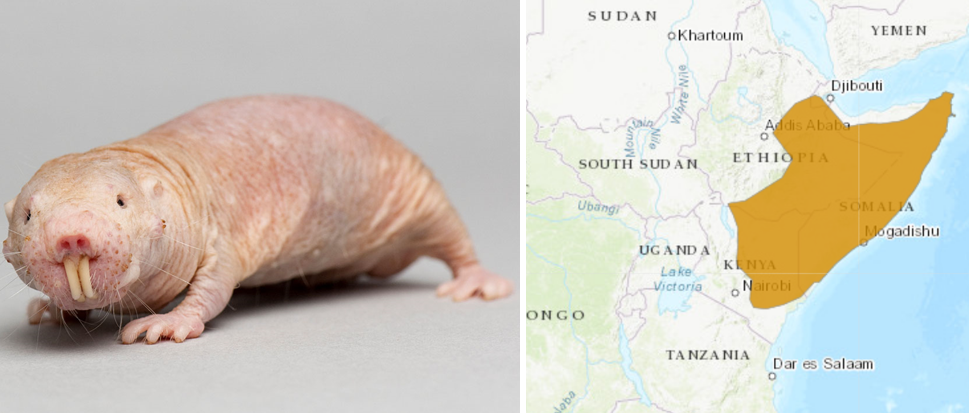
|
{Prelims – IR – India-Singapore – 2023/09/21} SIMBEX 23
- Context (PIB I TP): As part of the 30th Singapore India Maritime Bilateral Exercise (SIMBEX), Indian Naval Ships arrived in Singapore.
- SIMBEX holds the distinction of being the longest continuous naval exercise which has been held annually since 1994 between the Indian Navy and the Republic of Singapore Navy (RSN).
- The two phases of SIMBEX-2023 are the Harbour Phase in Singapore from September 21–24 and the Sea Phase that follows.
- The drill also includes participation from the Long-Range Maritime Patrol Aircraft P8I and Ranvijay, Kavaratti, and Sindhukesari.
{Prelims – S&T – BioTech – 2023/09/21} Truenat Test
- Context (TH): Kerala has been accorded sanction by the Indian Council for Medical Research (ICMR) to use the Truenat test to diagnose Nipah.
- Truenat is a point-of-care, rapid molecular test for diagnosis of infectious diseases.
- It is a chip-based, battery-operated RT-PCR test kit developed by a Goa-based company.
- Unlike traditional RT-PCR tests, the sample preparation in TrueNAT tests is automated.
- Originally, Truenat was developed to detect Tuberculosis (TB), and WHO has approved it for this.
- ICMR has also approved Truenat for detecting COVID-19.
Reverse Transcriptase Polymerase Chain Reaction (RT-PCR) Test
|
Advantages of Truenat Test
- It is portable, and tests can be performed in remote and resource-limited settings.
- It is cheaper and quicker than conventional RT-PCR tests; results are generally available within 1 hour.
- Its test results are reliable.




![PMF IAS Environment for UPSC 2022-23 [paperback] PMF IAS [Nov 30, 2021]…](https://pmfias.b-cdn.net/wp-content/uploads/2024/04/pmfiasenvironmentforupsc2022-23paperbackpmfiasnov302021.jpg)





